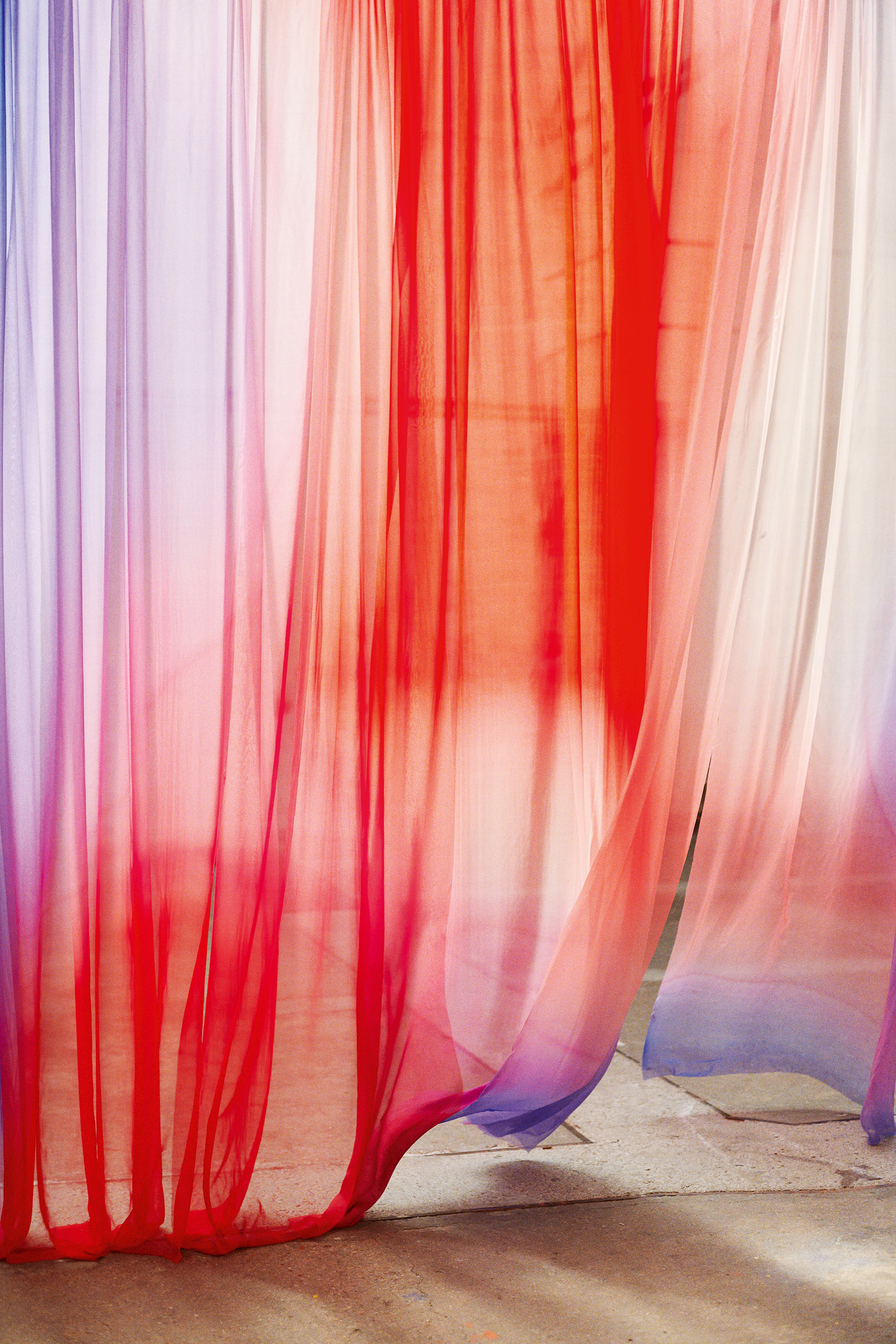Purple Magazine
— F/W 2016 issue 26
Justin Morin x Louis Vuitton
JUSTIN MORIN for LOUIS VUITTON, artist
Fall/Winter 2016/17 collection
interview by JEFF RIAN
photography by OLA RINDAL
style by YASMINE ESLAMI
French artist Justin Morin’s truncated pillars, Melted Bones, made of mirrors and concrete, framed Nicolas Ghesquière’s fall/winter 2016/17 collection for Louis Vuitton. Morin, an artist of perception, combines transparent silks and shimmery metals in ways that embody matter as form, movement, space, light, color, reflection, and even time.
JEFF RIAN — Can you give us a brief history of your work and its development?
JUSTIN MORIN — I grew up in a very rural area, at the frontier between France, Belgium, and Luxembourg. when I was a kid, I often went with my mother to the perfumery where she worked. That’s where i had my first aesthetic revelations: the pictures of the advertising, the colors and textures of the make-up, the architectural shapes of the bottles…
